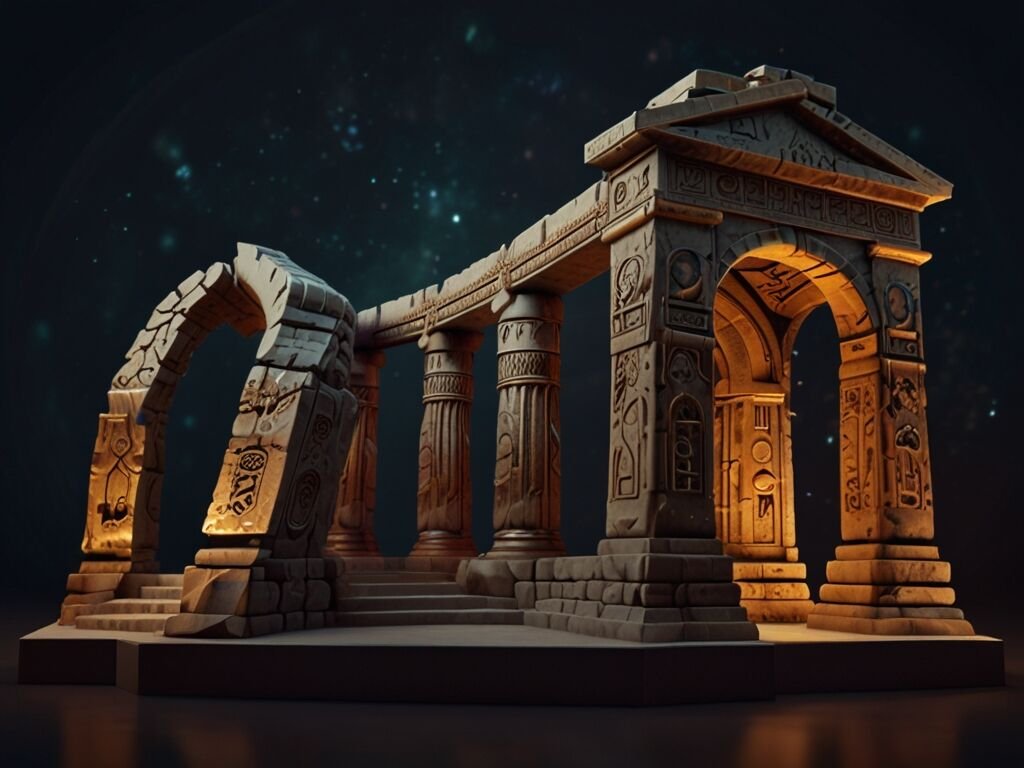Ancient art is like a time capsule. It gives us insight into the lives, beliefs, and values of civilizations long gone. Each stroke of paint, every carved figure, and each monumental structure tells a story of people who walked the Earth thousands of years ago. The significance of ancient art stretches far beyond mere decoration; it has shaped modern art, architecture, and even daily life in ways that are both profound and lasting.

1. What is Ancient Art?
Ancient art encompasses creative works produced by early civilizations around the world, from cave paintings to monumental architecture. Unlike modern art, which often explores abstract ideas, ancient art was generally more straightforward, often depicting religious beliefs, myths, and everyday life with great attention to symbolism.
2. The Significance of Ancient Art
Ancient art provided these civilizations with a way to express their worldview, honor their gods, and commemorate their leaders. By examining ancient art, we can gain insights into the values and traditions that shaped entire cultures, making it an invaluable resource for historians and artists alike.
3. Early Beginnings of Art
3.1 Prehistoric Art
Before there were empires or kingdoms, early humans made art. Prehistoric art, dating back tens of thousands of years, includes remarkable works like cave paintings, carvings, and petroglyphs found around the world. These pieces often depicted animals and hunting scenes, showing the deep connection early humans had with nature.
4. Ancient Egyptian Art
4.1 Characteristics of Egyptian Art
Egyptian art is characterized by its strict adherence to symbolic representation and a unique style that remained consistent for centuries. Figures were often depicted in profile, with emphasis on balance and order—a reflection of Egyptian beliefs in the stability of life and the afterlife.
4.2 Iconic Egyptian Artworks
Ancient Egypt produced some of the world’s most iconic art, from the Great Pyramids to the Sphinx and the treasures found in Tutankhamun’s tomb. These pieces not only served as decoration but were also meant to honor gods, kings, and the eternal journey of the soul.
5. Mesopotamian Art
5.1 Origins and Influence
Mesopotamian art emerged in the region now known as Iraq, one of the earliest cradles of civilization. Mesopotamian artisans crafted beautiful pottery, statues, and architectural wonders that highlighted the importance of religion and law.
5.2 Key Artifacts and Monuments
From the towering ziggurats to the detailed Code of Hammurabi, Mesopotamian art left behind a legacy of order and sophistication. The use of cuneiform tablets also shows how art and writing often intersected in ancient civilizations.
6. Ancient Greek Art
6.1 Characteristics of Greek Art
Ancient Greek art placed a high value on balance, symmetry, and the human form, guided by ideals of beauty and harmony. Greek artists studied the human body and portrayed it in ways that celebrated strength, grace, and realism.
6.2 Notable Greek Artworks
The Parthenon in Athens, intricate pottery, and sculptures of gods and heroes are all testaments to Greek craftsmanship and innovation. Their art became a foundation for later Western art traditions, inspiring centuries of artists.
7. Ancient Roman Art
7.1 The Roman Style
The Romans borrowed heavily from the Greeks, but they also made significant contributions of their own, particularly in the fields of architecture and engineering. Roman art often emphasized realism and depicted subjects from all aspects of life.
7.2 Key Roman Art and Monuments
The Colosseum, Roman mosaics, and lifelike portraits of emperors showcase the diversity and innovation of Roman art, which continued to influence European art for centuries.
8. Ancient Chinese Art
8.1 Themes and Motifs in Chinese Art
Chinese art evolved with a focus on harmony with nature and spirituality. Paintings often depicted landscapes and mythical beings, while calligraphy became an art form in its own right.
8.2 Famous Chinese Artworks
The Terracotta Army and detailed silk paintings are masterpieces that reveal the Chinese belief in life after death and the beauty of the natural world.
9. Ancient Indian Art
9.1 Styles and Forms
Indian art is deeply intertwined with religious beliefs, particularly Hinduism and Buddhism. This spirituality is reflected in intricate sculptures, temple architecture, and dance forms.
9.2 Major Indian Artworks
Masterpieces like the Ajanta caves, with their detailed frescoes, and statues of deities highlight the cultural richness of ancient Indian art.
10. Ancient Mesoamerican Art
10.1 Cultures and Art Forms
The ancient cultures of Mesoamerica, including the Maya, Aztec, and Olmec, developed unique styles in sculpture, pottery, and monumental architecture. They used art to document important events and honor their gods.
10.2 Prominent Mesoamerican Monuments
The pyramids of Teotihuacan and Mayan glyphs provide a glimpse into these civilizations’ sophistication and their respect for natural and celestial cycles.
11. The Legacy of Ancient Art
Ancient art laid the groundwork for modern artistic expression and architectural design. Elements of ancient styles can still be seen in today’s buildings, public art, and even movies. By preserving ancient art, we ensure that these stories and perspectives remain part of human history.
Conclusion
Ancient art is a bridge to the past, connecting us to the values, beliefs, and aesthetics of early civilizations. It is a testament to humanity’s creative spirit and a reminder that beauty and meaning have always been a part of human life.
FAQs
- What makes ancient art unique?
Ancient art is unique because it serves as a cultural and historical record, offering insights into the beliefs and lifestyles of early civilizations. - How did ancient art impact society?
Ancient art influenced societal values, preserved cultural heritage, and provided a basis for the evolution of modern art and architecture. - What are the oldest known artworks?
The oldest known artworks include cave paintings in France’s Chauvet Cave, dating back over 30,000 years. - How is ancient art preserved today?
Through careful conservation practices, museums and archaeological sites work to protect ancient art from decay. - Can we still learn from ancient art?
Absolutely! Ancient art provides a window into past societies, offering lessons on resilience, creativity, and cultural continuity.